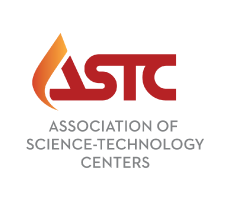Published October 24, 2019
An Interview with a Paleobiologist
There are many jobs, often behind-the-scenes, that allow the museum to continue acquiring fascinating objects that you see on display. One of these jobs is that of the Senior Research Curator of Paleobiology which involves the fossils of plants and animals. Enjoy this short Q&A with the Indiana State Museum’s expert in Paleobiology Ron Richards to learn about his experience working on a large scale excavation and his responsibilities at the museum.
When did you start working at the Indiana State Museum and what was your initial job?
I started at the Museum in 1979 as a volunteer, trying to organize the scattered and disheveled natural history collections. I became full-time staff in 1981 as an exhibits preparator. I had dark hair then.
As Senior Research Curator of Paleobiology, what does your job entail?
My current job entails strategically assembling collections and information from which to understand the life and environments of Ice Age Indiana. This can involve the amassing of a crew for field recovery of new finds, identification and cataloging of new specimens, publishing scientific papers and contributing to the overall visitor experience within the museum system.
When did you start work on the Megenity cave excavation? What was the initial goal of the dig and what is the goal now?
The Megenity cave excavation is an active archaeological dig site located southwest of Corydon, Indiana, that has uncovered a large amount of ancient fossil remains for our collectionThe Megenity cave excavation began with a sample collection of bones and sediment (for screening) in April 1987. The initial goal was to excavate the peccary bone-rich deposit found in one room of the cave. I had projected that a crew of nine could do that in nine days if we screened on-site. The goal later became to do an extensive excavation of the entire cave.
So far, what has been the highlight of the Megenity Cave excavation?
There are many highlights, such as the unfathomable number of small animals (voles, shrews, snakes, etc.) screened from the cave sediments, the massive amount of peccary bone (over 650 individuals represented), and the remains of rare and extinct animals such as giant land tortoise, tapir, armadillo, and even a juvenile mastodon. If I had to name just one — that might be recovering the dire wolf remains, which includes several individuals and one of the better skulls from the region.
Overall, what is your favorite artifact in our collection?
There are so many important specimens, and I do not think in terms of favorites, but I am drawn to the beauty and perfection of the Anderson Mastodon skull that our crews excavated at Monticello, in 2002. We returned from that excavation late at night with the skull and other bones to the then-new Indiana State Museum. That evening was enchanting and she (the mastodon) became to me part of the glow of the new museum.
If you’d like to hear Ron speak about his experience being our real-life Indiana Jones, join us for Quirky Queries: Ice Age Brutes on Nov. 12.








